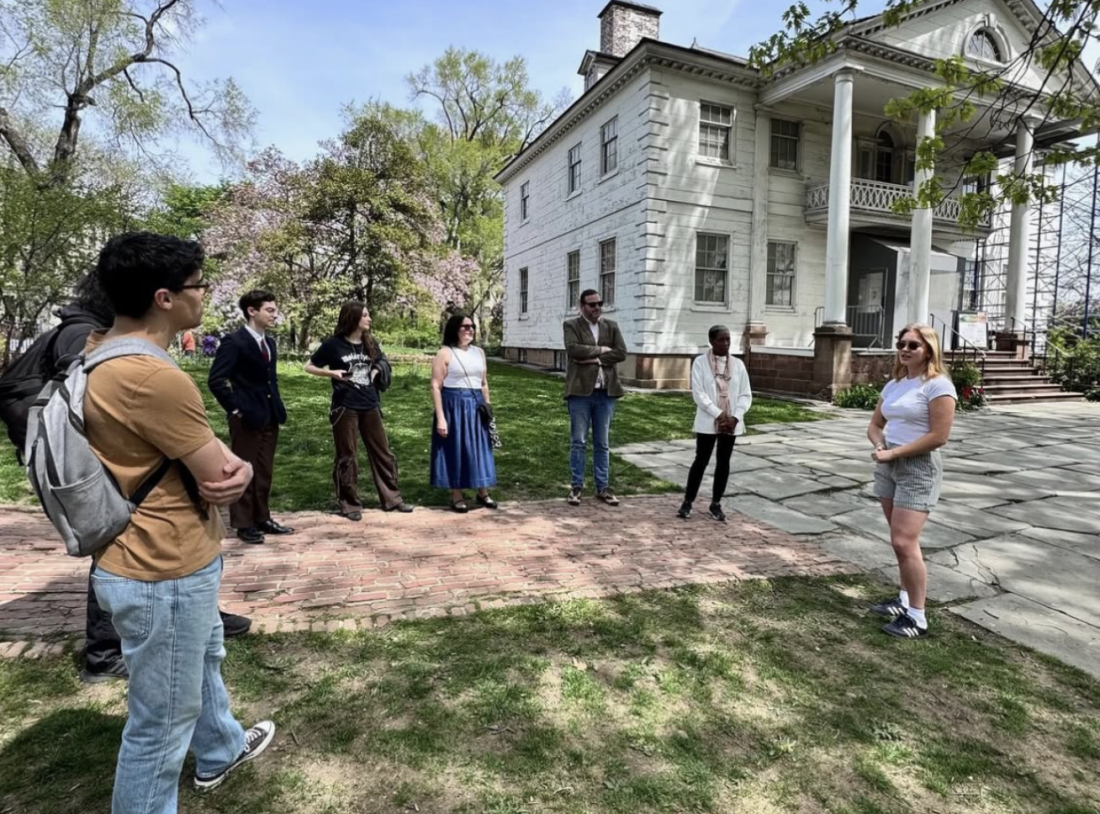Anna Plotnick

On April 25, I led a tour of the Morris Jumel Mansion for the History Society and History Department. As the current curator and visitor services intern, my most important task is assisting in the design and implementation of the museum's 260th anniversary exhibit. This will go on display June 14, 2025.
The Mansion was built in 1765 by British Colonel Roger Morris and his wife Mary Phillipse Morris. It was constructed as their summer home, which explains the very tall and wide windows and minimal fireplaces. But by the outbreak of the American Revolution, the Mansion was abandoned and briefly used by George Washington as his headquarters of war in the fall of 1776. Afterwards, the house had various occupants hosting soldiers and functioning as an inn and tavern. It was then bought by Madame Eliza Jumel and Stephen Jumel in 1810. After their family owned the house, there were several prominent occupants such as Louis LePrince, along with Ferdinand Earle and his family. It was sold back to the City of New York as a museum in 1904.
The Landmarks Preservation Commission designated the Morris Jumel Mansion as an Individual Landmark in 1967 and an Interior Landmark in 1975, and the Mansion was listed in the National Register of Historic Places in 1966. The Mansion is a member of the Historic House Trust of New York City. The museum recreates the setting of a 19th-century home using archives, object collections, and historical preservation. More importantly, the mission empowers its audiences to create relevant contemporary connections to the histories of the Mansion, its collections, the land, and its people, past and present.
On the tour, I recreated a timeline of the historical events and occupants that have been at the house, from the Morris family to George Washington and even briefly Aaron Burr, the third Vice President of the United States. I feel that walking around the house allows me to highlight different events the house and its occupants experienced. Based on my audience of fellow classmates and my professors, I chose to highlight key historical and political developments of each era, making sure to explain some interesting narratives. My main focus was Eliza, since she was the woman of the house.
Since my first day, I have been enthusiastic about working at this museum, especially because I am able to apply academic skills to real-world workplace scenarios. In the History BA/MA program, I’ve learned critical thinking skills that apply to so many historical fields. Now, I can engage critically on-site with historical preservation and local community engagement. Upon reflection, I feel that it is places like this where I feel most hopeful that history will remain a meaningful field to the public.
I have learned from these experiences how to immerse myself in my work and studies so I can best represent this history to a public audience. As a future historian, the experience of interning here, giving tours, navigating the archives, and participating in the mission of the museum has been imperative to my professional skills. I can have more meaningful interactions with my audiences and more authentic engagement in my day-to-day work assignments.